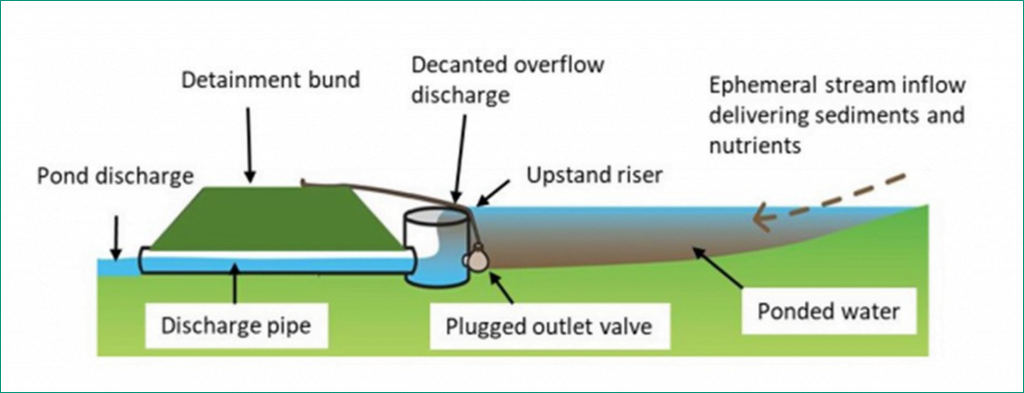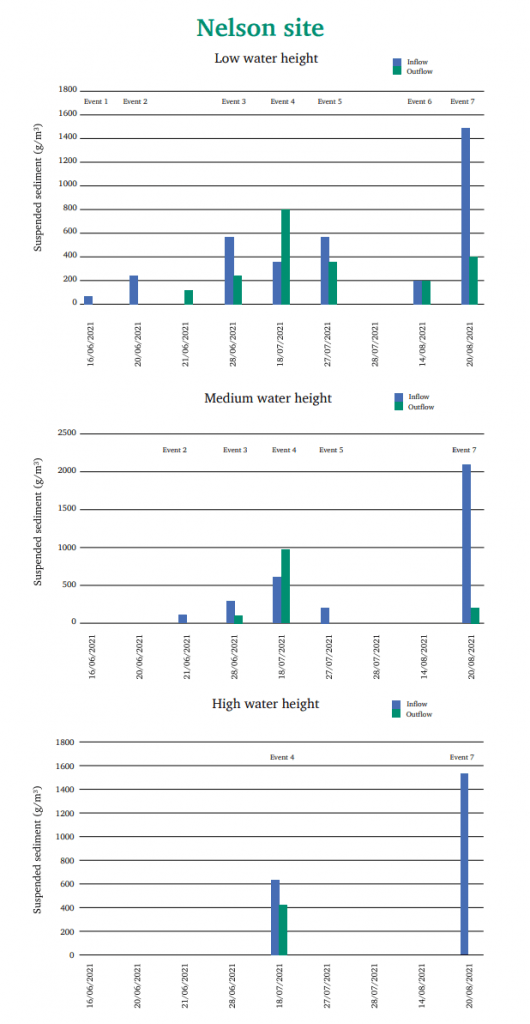Traps Catch Sediment
A farmer-led study investigating the effectiveness of sediment traps to improve water quality has delivered some encouraging results.
King Country farmer Blair ‘Munta’ Nelson knows sediment run-off is the number one environmental issue faced by farmers in his district. He’s convinced farmers can go a long way to solving the problem by installing small, low- cost sediment traps on their properties.
Munta joined Perrin Ag consultant Peter Keeling to run a trial to test the effectiveness of the traps and come up with some recommendations on the best way to construct them, with funding from Our Land and Water’s Rural Professionals Fund.
“There’s a whole lot of pressure to make improvements on- farm and we need more tools in the toolbox,” says Munta.
“In my opinion there’s still not enough hands-on data to say, ‘This is what you should be doing’. We’re getting asked to fence off our waterways and plant trees, and there are mixed recommendations as to what you should and shouldn’t be planting, so we were looking for another form of mitigation.”
Peter Keeling says King Country hills are prone to sediment run-off thanks to the soil type and relatively high rainfall. “Those soils are either soft or softer. It doesn’t really matter whether it’s got bush on it or not, you’ll get a lot of silt come down off the hill country. Initially it forms small water channels which then grow into something bigger.”
One solution to sediment run-off investigated by a farmer group near Rotorua involved large detainment bunds. That approach won’t work in the King Country hills, Peter says, because the landscape is steeper and the soil is different. “The detainment bunds are quite big and they’re on quite a gentle slope. We can’t do that on hill country.”
Large bunds are also costly and may require resource consent, which Munta Nelson was keen to avoid. By keeping sediment traps small (with dam walls less than m high) resource consent requirements aren’t triggered and the cost is likely to be $2,000 to $3,000 – compared to perhaps 10 times as much for a large, engineered, consented detainment bund. “I believe the solution is not building one massive bund or sediment trap that costs me $45,000. For me, the answer is spending a couple of thousand dollars on a sediment trap and doing one every year,” Munta says.
Traps trialed on three farms
The project constructed three different ponds on three neighbouring farms: the Nelson’s, the Foss’ and the Proffit’s.
The project aimed to measure the effectiveness of the three traps in reducing sediment concentrations leaving small-to-medium (3.5-20 ha) hill country sub-catchments. Through demonstration, the team hoped to create farmer discussion and increase awareness of the factors that need to be considered when installing sediment traps.
There’s a whole lot of pressure to make improvements on-farm and we need more tools in the toolbox.
The effectiveness of the three sediment traps was measured by installing simple siphon samplers to monitor sediment concentrations entering and leaving the sediment trap, from approximately three different flow heights during six rainfall events. The hope was to get a picture of trap efficiency over a range of rainfall run-off events.
The three traps trialed were constructed differently. All held water that was released via a riser connected to a pipe that drained through the front of the structure, sufficiently slowing the movement of water to allow suspended sediment to drop out (see Figure 1).

Sediment concentrations in the trial were highly variable, but generally outflow concentrations were less than inflow concentrations, suggesting that the sediment traps were working (see Figure 2 below, click image to enlarge). The farmers faced challenges adapting the riser design to their environment and more work is needed to find a design that works in this environment.

Next steps
The project team will release a farmer ‘cheat sheet’ describing how to create a sediment trap, but this won’t be finalised until the farmers, local community and experts get back together to de-brief and draw some conclusions. This has been delayed due to Covid-19 Level 3 restrictions in Waikato.
Getting farmers together on-farm with experts was enormously valuable, says Munta Nelson. He believes the three farmers involved in the project will continue to install one or two sediment traps each year. “That’s what I want, where it just becomes part of the normal. We built one last year and if we build one this year and one next year, in 20 years’ time I’ve got 20 of them, haven’t I?”
If each sediment trap removes sediment from small waterways, eventually the total amount reaching the large Mokau River will be reduced.
“Personally, I think fundamentally they work,” says Peter. “But have we found out a one-size-fits-all recipe? Probably not.”
The three farmers involved have tried something that suits their farms and have shown that decreases in sediment can be achieved. “This will give other farmers the confidence they can do similar work in their situation and make a difference too,” he says.
– Tony Benny for Our Land and Water National Science Challenge
More information:
- Rural Professionals Fund 2020-21
- Download PDF
- All text in this article is licensed for re-use under Creative Commons Attribution 4.0 International (CC BY 4.0)
Author
 View Our Strategy Document 2019 – 2024
View Our Strategy Document 2019 – 2024




Leave a Reply